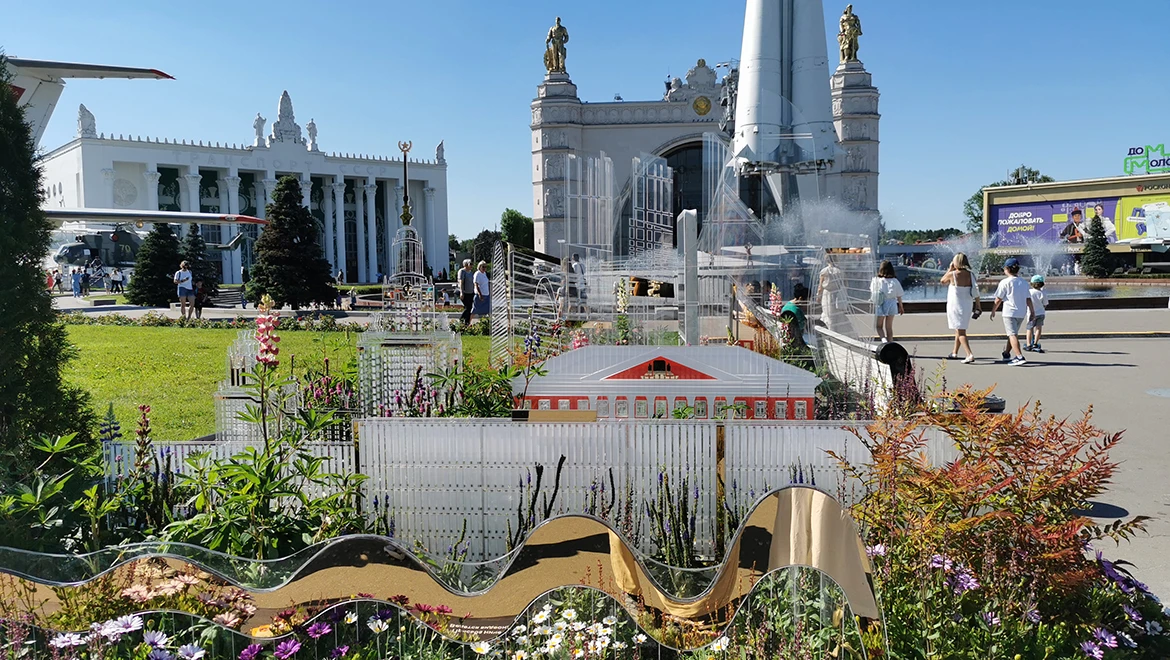Red clover. Vologda region
The
composition of the Vologda region at the RUSSIA EXPO uses meadow clover,
decorative flax, junipers and other plants. Their color palette coincides with
the main colors of the region: red and white. These are symbols of fire, the
sun, as well as a symbol of revival, a symbol of earthly life, fertility, love,
continuation and protection of the family, warrior and manhood, amulet.
Red
(meadow) clover belongs to the legume family. Its international botanical name
is Trifolium pratense. Translated into
Russian, it means "three leafed". This
name was given to the plants because of the characteristic structure of the
leaves: in all species of clover they are trifoliate. It is very rare to find a
four-leafed one among the triple leaves. According to folk legend, such a find
should bring good luck.
Clover has long been known in folk medicine. It has anti-inflammatory, antifungal, antimicrobial, astringent and analgesic properties.
In addition
to its medicinal properties, red clover is known as an excellent mellifer.
However, only certain species of bees with long trunks can extract honey from
it. Such honey is characterized by its special healing properties, it does not
get sugary for a long time and does not lose its properties.
But most
importantly, clover is an excellent forage crop. It is widely used in field
grass sowing, in the creation of cultural hayfields and pastures, it also plays
an important role in improving soil fertility and its protection. The plant
enriches the soil with nitrogen - it is one of the best predecessors in crop
rotation. It is used in the production of green fodder, hay, grass meal,
haylage and silage. Clover surpasses corn and oat grain in the content of
essential amino acids, and it also contains a large amount of carotene,
vitamins and trace elements.
"Clover
is a plant that peasants used to imagine under the name of macushka,
woodpecker, kashka, trefoil, it is found in wild form, and there are many
different forms" - this is what is said about clover in the book "How
to Start Field Herbs in Peasant Farming", published in 1905.
Naturally,
such a widespread plant was represented in the northern folklore. For example,
among peasants there was such a proverb: "Flax and clover, clover and
flax. He who sows them is smart". Or another proverb: "Hold on to the
spindle whorl like your mother - it will come out like a macushka", which
means "it will be as elegant and beautiful as a macushka, i.e. clover".
Folk
beliefs of Nikolsky district say that on the night of Ivan's Day all miraculous
and healing herbs blossom. In this regard, knowledgeable and experienced
people, especially village healers and witch doctors, did not miss the
opportunity to collect healing roots and herbs for the whole year. Clover was
also collected on the same night. It was used to make a decoction for colds,
fevers and coughs.
The famous
Vologda oil is so fragrant and aromatic thanks to meadow clover. This discovery
was made by Nikolai Vasilyevich Vereshchagin - brother of the famous battle
painter Vasily Vereshchagin, who created such canvases as: "Apotheosis of
War", "Timur's (Tamerlane's) Gate", "Execution of
Conspirators in Russia", "Defeated (Memorial Service)".
Unlike his
brother, Nikolai Vereshchagin did not connect his life with art, but became the
founder of the branch of the Russian national economy "butter and
cheese-making".
He said
that "the state, which has such flood meadows, does not need gold mines".
It is thanks to the many grasses in animal fodder that the amazing flavor of
Vologda butter appeared. The soils of the Vologda region have a special
mineralogical composition, which is transferred to the grasses in the flood
meadows, and then to cow's milk, from which Vologda butter with that famous "nutty"
flavor is obtained.
Along with the RUSSIA EXPO, the flower festival is also coming to an end.
The "Future in Flowers" festival continues at the RUSSIA EXPO, where unique flowerbeds from all regions of our country can be seen at the "Space" pavilion until July 8.
The RUSSIA EXPO concludes on July 8, and with it, the flower festival will also come to an end.





